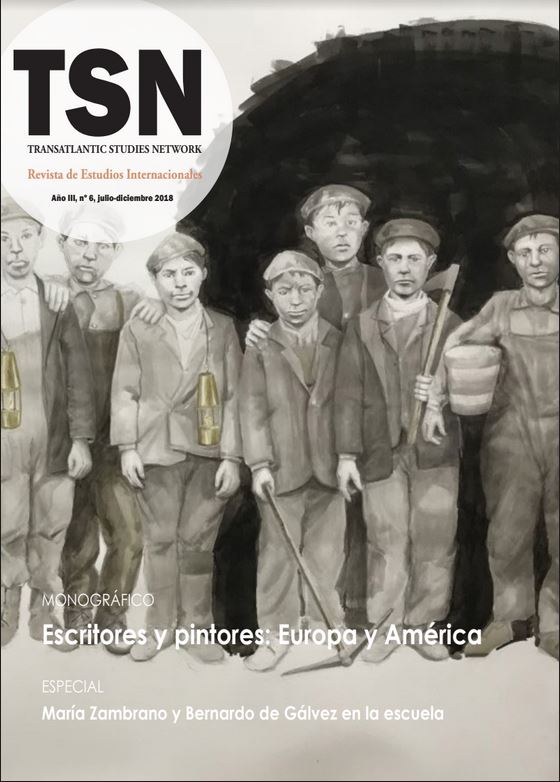Manuel Mujica Lainez. Un novelista en El Museo del Prado: A Poetics statement
Keywords:
Poetics, iconographie, melancholy, literature, paintingAbstract
Un novelista en el Museo del Prado, the latest novel by Manuel Mujica Lainez (1984), can be pictured as the literary legacy of the argentinian narrator. A legacy that condenses an essential Poetics: the design of a fable that finds in Art its source of inspiration, a field that feeds the fantasy of the artist and custodies the code of melancholy from the beginning, the sublime temperament of the creative genius. From this iconological background, attention must be paid to the iconographic disposition, which would resume the principles of the “art of memory”, basis of the construction of the “emblems in action” we can see parading along these stories. This work, therefore, requires an active reading role, moving from the image to the word, compromising both fields, essential to approach the construction of the so-called “historical novels of European matter”: Bomarzo, El unicornio, El laberinto and El escarabajo. We must, therefore, consider that this reading approach would resume the legacy of Romanticism and Modernism, extending itself to the literary criticism lessons that Eugenio d’Ors once forged in his Tres horas en el Museo del Prado.
Downloads
Metrics
References
Blanco Fresnadillo, Lourdes (2013): La poética de Manuel Mujica Lainez. Fábula e iconografía. Málaga: Servicio de Publicaciones, Universidad de Málaga.
Burton, Robert (2002): Anatomía de la melancolía. Madrid: Asociación Española de Neuropsiquiatría.
Campos, Jorge (1971): «Bomarzo, novela manierista», en Ínsula, n.o 292. Madrid: año XXV, marzo, p. 11.
Cervantes, Miguel de (1992): Los trabajos de Persiles y Sigismunda. Madrid: Castalia.
Darío, Rubén (1995): Azul. Cantos de vida y esperanza. Madrid: Cátedra.
Depetris, C. (2000): El conflicto entre lo clásico y lo grotesco. Pamplona: EUNSA, Anejos Rilce.
Dubois, C. G. (1980): El manierismo. Barcelona: Península.
Fernández Ariza, Guadalupe (1999): «Bomarzo, el sueño manierista de Manuel Mujica Lainez», en Anales de Literatura Hispanoamericana, n.o 28. Madrid: Universidad Complutense.
González Castro, Francisco: «Pintura y literatura. Funciones de la representación pictórica en la trama novelesca», en Actas XVI Congreso AIH. Centro Virtual Cervantes. https://cvc.cervantes.es
Hugo, Victor (1971): Manifiesto romántico. Barcelona: Península.
Klibansky, Raymond; Panofsky, Erwin y Saxl, Friedrich (1991): Saturno y la melancolía. Madrid: Alianza.
Limbourg, Paul, Herman y Jean (1989): The Très Riches Heures of Jean, Duke of Berry. Nueva York: Georges Braziller.
Mujica Lainez, M. (1972): Cecil. Buenos Aires: Sudamericana.
— (1974): El laberinto. Buenos Aires: Edhasa.
— (1978): Glosas castellanas, en Obras completas. Buenos Aires: Sudamericana.
— (1983): Placeres y fatigas de los viajes, parte primera. Buenos Aires: Sudamericana.
— (1984): Placeres y fatigas de los viajes, parte segunda. Buenos Aires: Sudamericana.
— (1994): El unicornio. Barcelona: Seix-Barral.
— (1996): El escarabajo. Barcelona: Plaza & Janés.
— (1997): Un novelista en el Museo del Prado. Barcelona: Seix-Barral.
— (1998): Bomarzo. Barcelona: Seix-Barral.
Orozco, Emilio (1988): Manierismo y Barroco. Madrid: Cátedra.
Panofsky, E. (1998): Idea. Contribución a la historia de la teoría del arte. Madrid: Cátedra.
Shakespeare, William (2000): Sonetos, traducción de Manuel Mujica Lainez. Madrid: Visor.
Yates, A. F. (1974): El arte de la memoria. Madrid: Taurus.
Downloads
Published
How to Cite
Issue
Section
License
Copyright (c) 2024 TSN. Transatlantic Studies Network

This work is licensed under a Creative Commons Attribution-NonCommercial-ShareAlike 4.0 International License.























